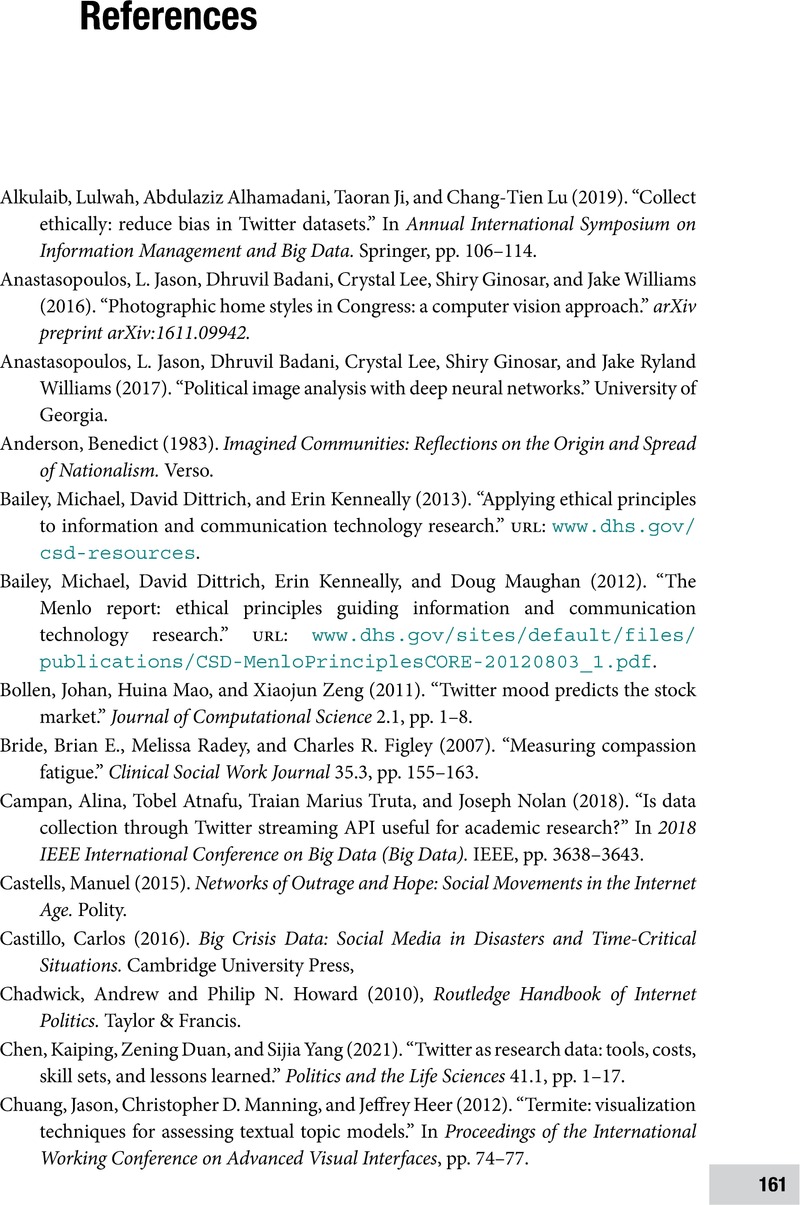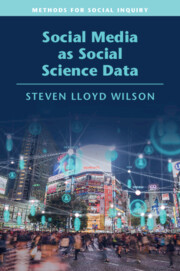Book contents
- Frontmatter
- Contents
- Figures
- Tables
- Code Snippets
- Acknowledgments
- 1 Why Social Media Matters to the Social Sciences
- 2 Getting Started with Social Media Data
- 3 Content Analysis of Social Media Data
- 4 Geospatial Analysis of Social Media Data
- 5 Network Analysis of Social Media Data
- 6 The Ethics of Using Social Media Data
- References
- Index
- References
References
Published online by Cambridge University Press: 03 November 2022
- Frontmatter
- Contents
- Figures
- Tables
- Code Snippets
- Acknowledgments
- 1 Why Social Media Matters to the Social Sciences
- 2 Getting Started with Social Media Data
- 3 Content Analysis of Social Media Data
- 4 Geospatial Analysis of Social Media Data
- 5 Network Analysis of Social Media Data
- 6 The Ethics of Using Social Media Data
- References
- Index
- References
Summary

- Type
- Chapter
- Information
- Social Media as Social Science Data , pp. 161 - 167Publisher: Cambridge University PressPrint publication year: 2022



